You are being watched!!
Now, if this was about a sci-fi movie, horror movie or a suspense-thriller, it would be scary. If, however, I was to tell you that this is about online marketing and you are the target, the word that comes to your mind (mostly) is annoying; scary is not even close. After all, most of us are victims of intrusive and useless ads, not to mention the extremely annoying pop-up asking us if we would want to know ‘How to Keep our Soul Healthy’. Really??
But then again, let me not beat-up the online Marketing and Advertising world so bad. After all, I am on online buyer too and at times have found effective ads, at the right time, helping me buy something. In my opinion, it must be an effective medium otherwise advertisers wouldn’t be spending about USD 98 bn in the U.S. alone, on online ads. Take a look at the statistics from the Kind Ads whitepaper.

It is not the advertisement as much as the approach to it which is the pain.
Online Advertisement – As it is Today
Like I said in the introduction section, online ads are not as bad as the approach. Out of hundred ads that we may come across in a day, about two or three is what we would find relevant, if at all. This is where the annoying part comes in. We are literally bombarded with information that we do not use at all and those which we use is probably because of its ability to drive our attention; still, it’s a hit or miss strategy.
“This is the portrait of the future customers—connected yet distracted. A survey by the National Center for Biotechnological Information shows that the average human attention span has dropped from 12 seconds in 2000 to 8 seconds in 2013. This can be attributed to the massive and overwhelming volume of messages that constantly bombard our connected mobile devices and demand instant attention.”
― Philip Kotler, Marketing 4.0: Moving from Traditional to Digital
Let’s take a closer look at how the online advertising world looks like.
The online advertising world is a bit skewed towards Google and Facebook which are the go-to sites for most of the population of the world. Now, if you think about it, how do Google and Facebook make money? Obviously, they are not charging the users to use their site then how else do they make money? Through advertisements – correct. They can be considered as the real estate moguls of the online world.
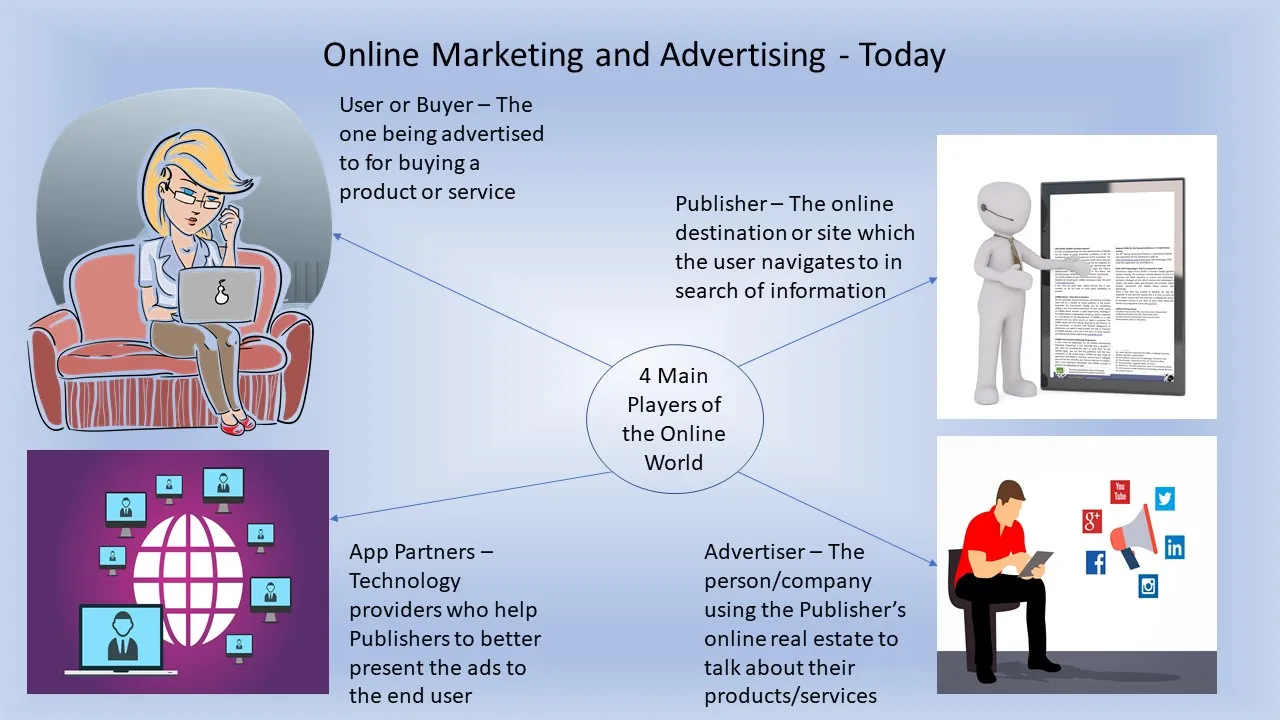
Even independent website owners, in an attempt to monetize their sites, will tie up with Google through their Adsense accounts and get paid as visitors see the ads placed on the site. Such independent website owners are the Publishers with an engaged or disengaged user community. Now, those publishers who have enough capital to raise a sales team can actually go and talk to advertisers and engage them to advertise on their sites. This is basis the belief that the advertiser can make a good ROI from the Publisher’s site. However, those publisher’s who do not have much muscle power in terms of money, continue to use programs like Adsense and will get paid after a month to two months’ time.
Between Publisher, Advertiser and the User, there is one more player, the technology or app providers. These are players who bring in the best of technology to help publishers communicate the right advertisement to the users in an effective manner. So, Technology Partners used in the right manner at the right time could prove decisive.
Take a look at this video explaining the current online world:
So, great, everything looks fine, isn’t it? Not really. If you had gone through the video you would have got a sense of what is not right with the online world today. It’s worth elaborating a bit.
- There is no way for an advertiser to gauge how effective a publisher’s engagement is with their user/subscriber base is.
- Both Publishers and Advertisers realize that the whole ecosystem makes more money only when a user is converted to a customer by buying the goods or service which the advertiser is advertising
- Now, this is difficult to do, especially when there are no customized ads to reach the user for their specific need. So, the only way to advertise is to put up banner ads or display ads.
- The Problem is that no one in the system knows “Who the User Is” and “What Does He/She Want?”
- Now, if we bring money into the equation, the advertisers, year after year, will be spending more, to showcase more, to more users, and hope some percentage will convert. The news is that there will be more middle-men and there will be more new users and hence, the cost will continue to escalate
- Conversely, the publishers will continue to struggle to prove to the advertisers that they have an engaged set of users. The conversion from these users still being a suspect, advertisers pay less per lead with hardly any monetary correlation to conversion. This leads to the publishers not making enough money in the whole game
- We are just about touching the technology partners, who anyway are considered only at the end. Why is that? Because, if the publishers are not making much money, would they invest in technology? Chances are less because they are not sure that the technology is going to change the equation much.
- What happens next?
The entire online advertising model enters a vicious cycle. The worst part is that the repercussions of such a limiting cycle are felt by the user community; people like you and me. We are literally, bombarded by ads and annoying pop-ups in the middle of our reading. Guess what, we are not even asked if we want to see the ads or in-return to seeing ads get paid.
Can that happen? Can users really be asked about ads being displayed and most of all – get paid?? Can that really happen? Turns out it can. Kind Ads have given this a thorough thought.
Kind Ads did you say?
Kind Ads, as the name suggests, is a company which believes that they can be kind to the user by showing them relevant ads, and with their permission in many cases. They are trying to establish “Who the User Is?” and “What does he/she want?” so that the ad ecosystem can move on to figure out “How to convert the known User to a Customer”.
The team behind Kind Ads seem to have done their homework. Now, we saw that Google and Facebook are the giants in this game and would it make sense to take them head on? Not really, especially Sun Tzu of the ‘Art of War’ fame wouldn’t agree. Now, most would agree that Sun Tzu is the master of strategy and his ideas are relevant in the business world as much as the battlefield.
It is better to look at what the current players are not doing and try doing that effectively. That is what Kind Ads plans to do and this approach of theirs is what lends them more credibility of being a smart player versus being a novice trying to do the unthinkable.
So, what’s the Plan?
The Kind Ads ecosystem tries to bring the publishers, advertisers, technology partners and the users together in a more effective manner, removing the middle-men, and ensuring that each member of this ecosystem makes money while using the platform; and make money fast. Not wait for two to three months to get the payment.
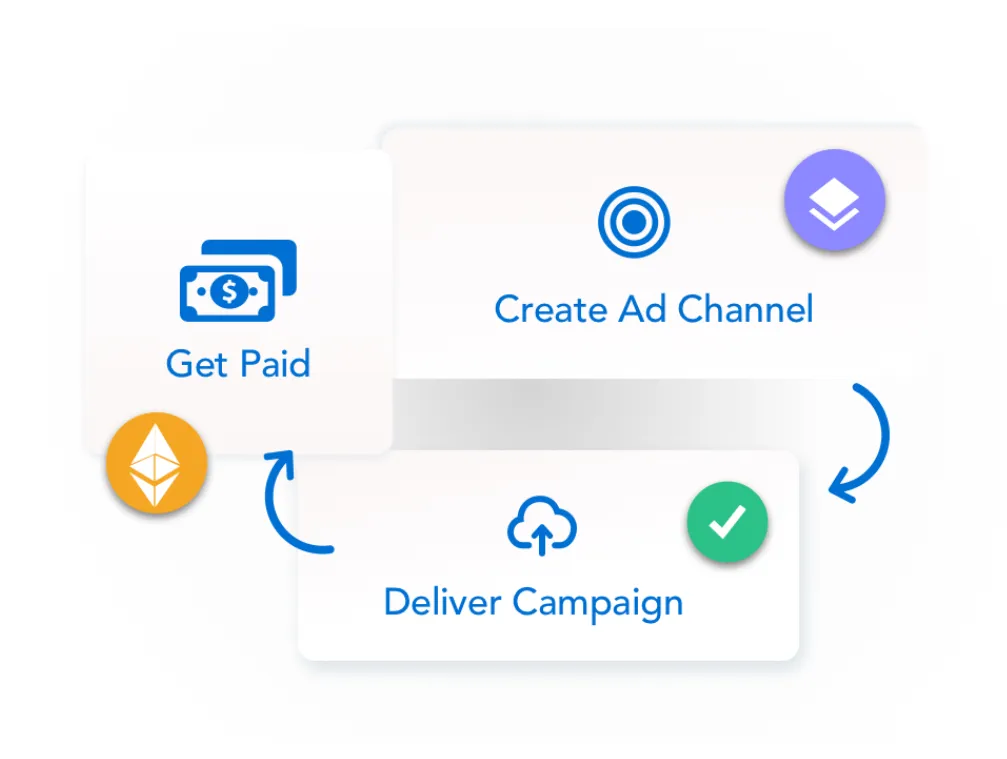
Kind Ads itself is built on Ethereum, undoubtedly a better blockchain platform and brings the advantages of decentralization to the advertising world. Besides, the medium of communication that they have chosen is email and push notification, both of which the Googles and Facebooks of the world have chosen to ignore. But statistically, this is also the medium which shows a higher rate of conversion.
Now, while discussing the traditional online marketing world, we saw the inability of advertisers to gauge the effectiveness of publishers’ subscriber base, and that’s exactly what Kind Ads starts with.
Reputation and Quality Score for Domains and Publishers
Kind Ads have come up with an algorithm to arrive at a decentralized quality and reputation score for domains and publishers. The source of information can be something like Google Analytics and/or third-party trusted sources of data.
Advertisers can tap into the ecosystem and tie up with high score publishers and domains. Since there is no middle-men and a confirmed engaged user-base, the advertiser can pay more and still have an incredible ROI.
Decentralized Network for Advertisers to find effective Publishers and Subscribers
This is one of the most important features of the Kind Ads Protocol, which until now was not provided in the ad world. Here an Advertiser can choose multiple numbers of publishers based on the reputation score to run a campaign.
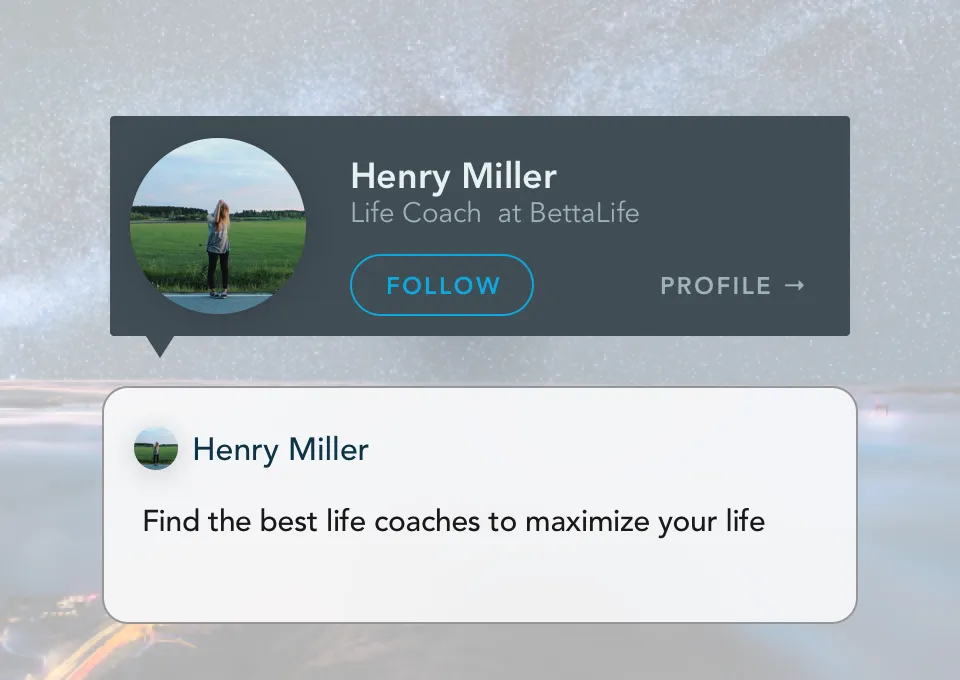
Let’s take an example. If the Advertiser wants to promote ‘wellness and health’, he/she can identify publishers across the globe with high reputation score promoting wellness and health. What kind of user base will we find here? The kind who intend to invest in wellness and health. That, therefore, is the exact user base the advertiser would like to reach. Think about the conversion now considering the fact that user gets to see what he or she wants.
The entire campaign would have an amazing conversion percentage, not to mention the ROI.
Incentivised User Base
This is one of the most unique propositions of the Kind Ads solution. Users are not incentivized in the current model of online ads. Although it does happen in other industries like research, where customers are paid or incentivized to go through the research questions. This is one of the best industry practice being brought to the ad world. How would the online experience be where users choose what they want to be advertised on and best of all get paid to be advertised to. Isn’t that a win-win? Yes, it is.
The Kind Ads platform allows users to join the ecosystem to allow ads of the nature that would interest them. They also have the choice to opt-out if they wish to or opt – out of a particular set of ads and continue to retain the others. Such an ecosystem brings about transparency to the advertiser and publisher to know what needs to be communicated to the user.
All the money spent in the traditional model on trying to understand the user can now be spent to streamline the information flow and in turn, make money for all involved.
Empowered Technology Partners
Now that we see a ready publisher, advertiser, and user in the ecosystem, a technology partner finds it easy to attract the attention of the publisher and advertiser. They can simply come and show how well their medium can enable the information flow to the customers. There is an inherent incentive to look at technology partners too. As more and more members join the Kind Ads ecosystem, the objective of the ecosystem moves from “Who is my User" and "What he Wants?” to “How do I communicate to my User in an Effective Way to convert him to a Customer?” The first two questions are anyway answered by Kind Ads platform, the third can be addressed by the Technology Partners and thereby, they too enter a profitable association.
Best part of the ecosystem is that payment is done immediately. There is no waiting period as in the traditional online ad world.
Take a look at the video showing the Kind Ads Ecosystem
How does the ecosystem transact?
The Kind Ads ecosystem will transact in KIND token which is an ERC – 20 compliant token built on the Ethereum blockchain. The key functionality will be as follows:
- Token is exchanged by users in order to opt in and out of the Kind Ads Ecosystem
- Token is used by advertisers to purchase ads from publishers on the network
- Token is used to pay publishers on a daily basis
- Token is allocated to the daily reward pool for publishers, users and app providers
Here’s a pictorial representation of the Kind Ads token flow:
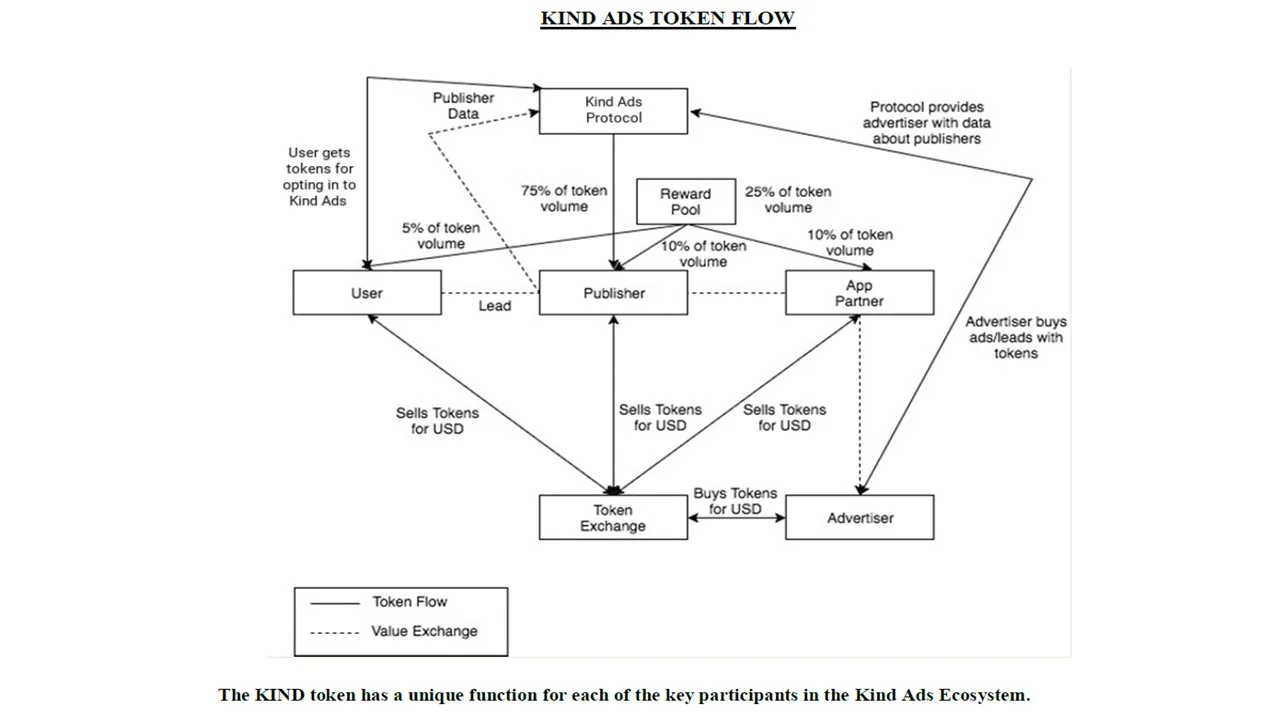
The total supply of Kind tokens is 61,000,000. More tokens outside of the 61,000,000 cannot be released, and the token cannot be mined.
What’s the Road Ahead?
Here’s the quarter-wise plan for Kind Ads
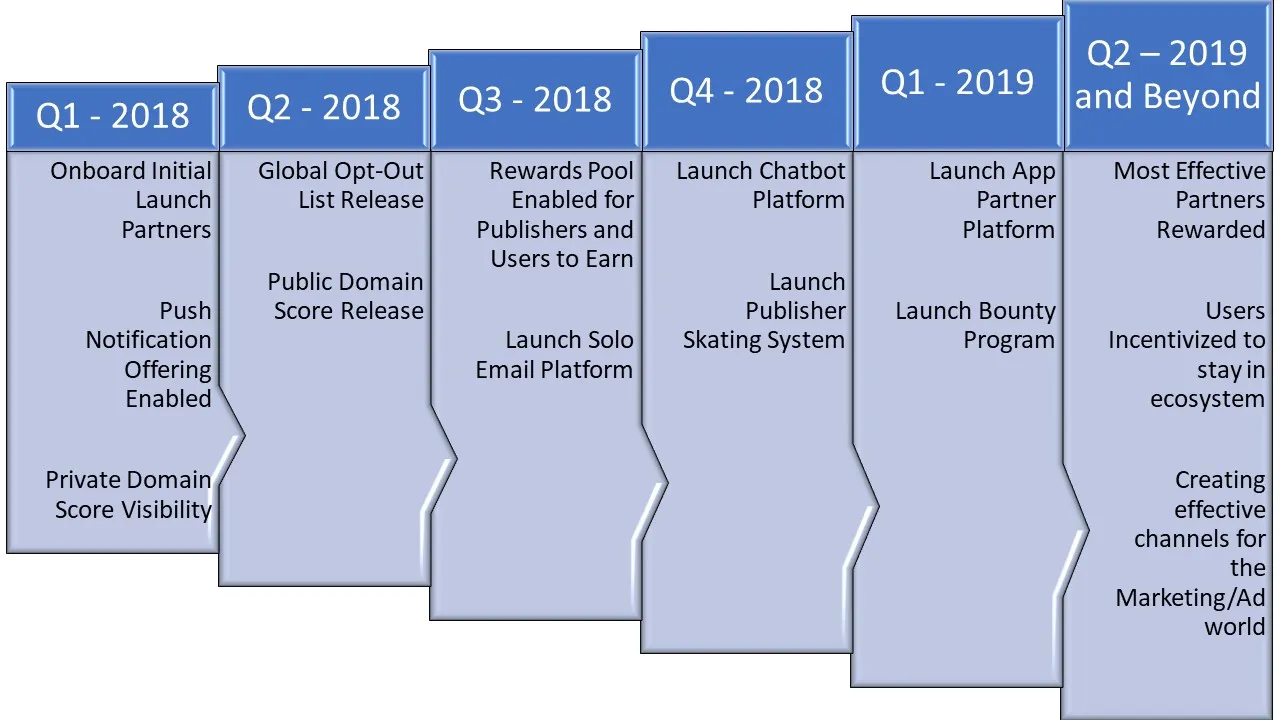
Now, let’s look at the Advisors and Kind Ads Team

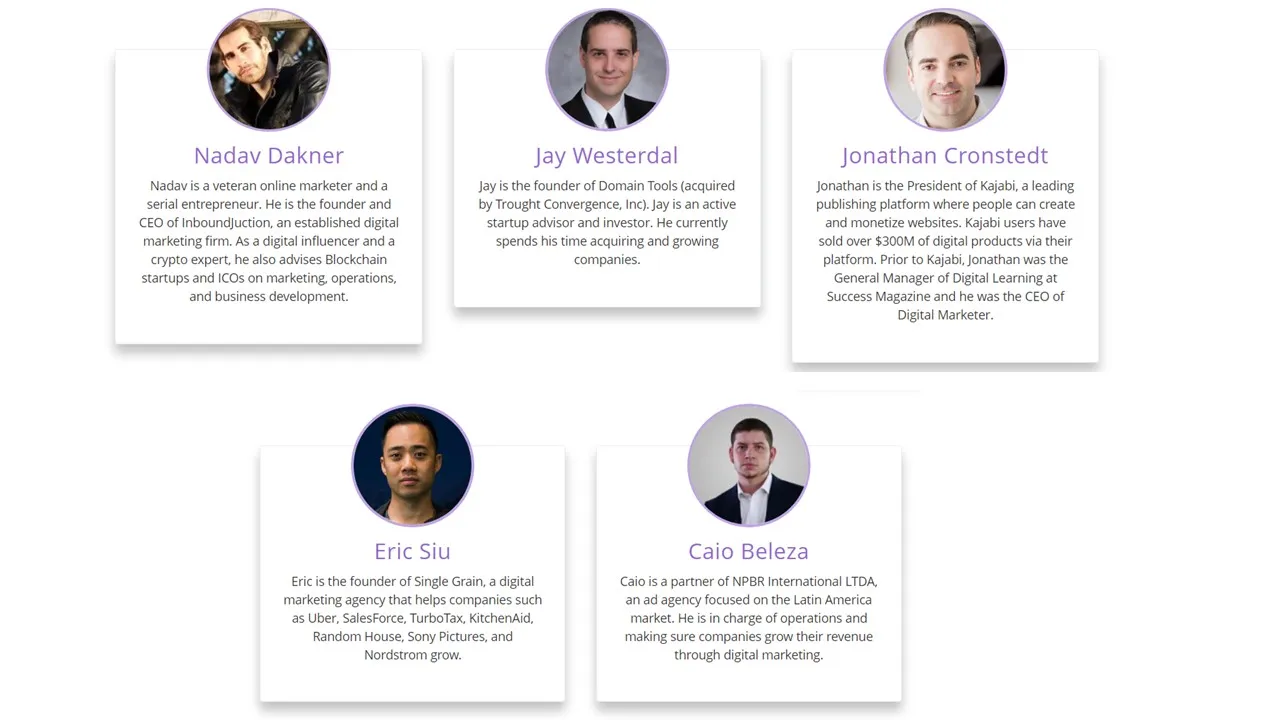
It is also recommended that readers understand more about Kind Ads through any of the following informative resources.
This article is written in response to originalworks’ call on authors’ thoughts on Kind Ads as a concept. It can be read here.
kind2018

